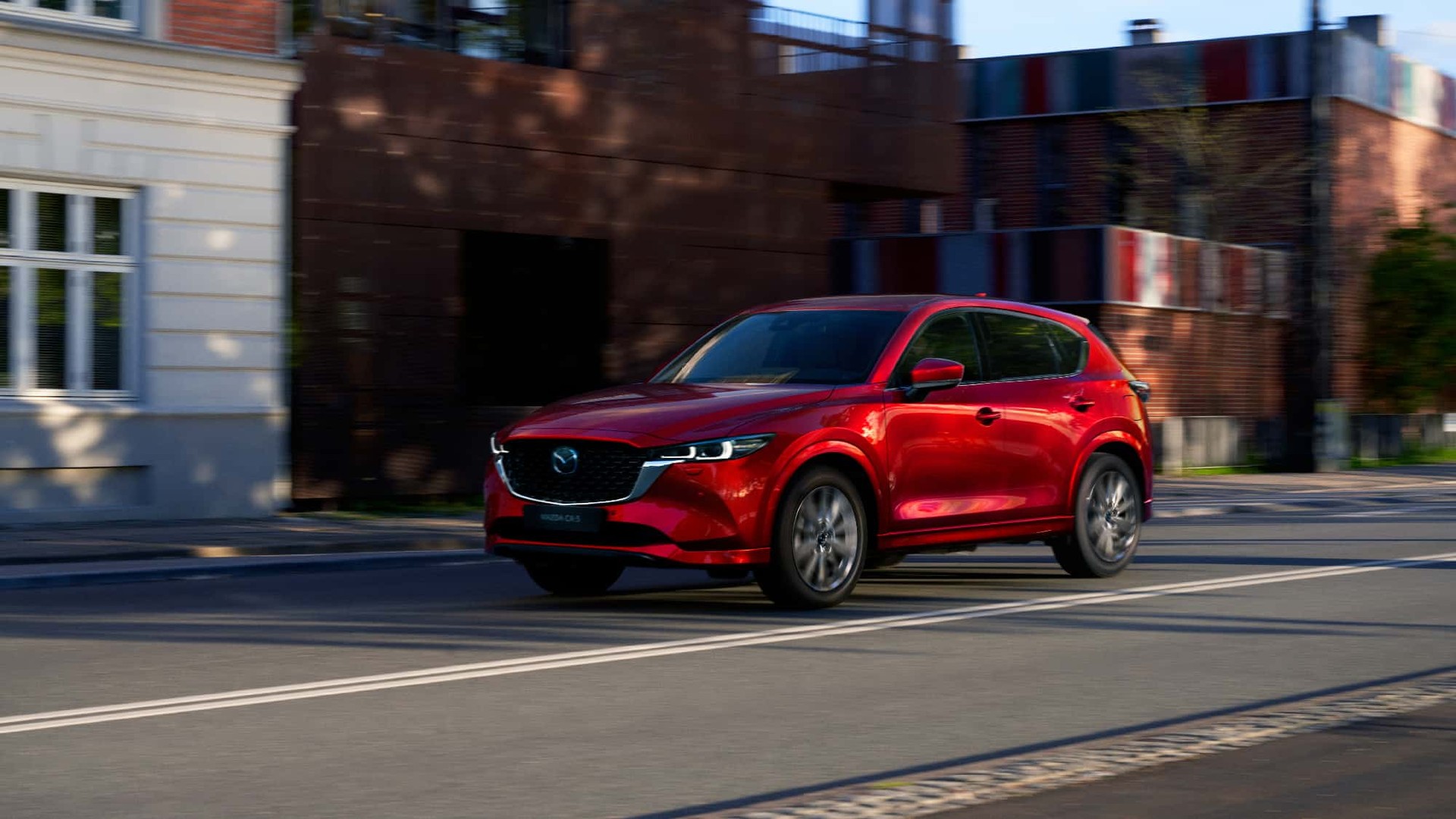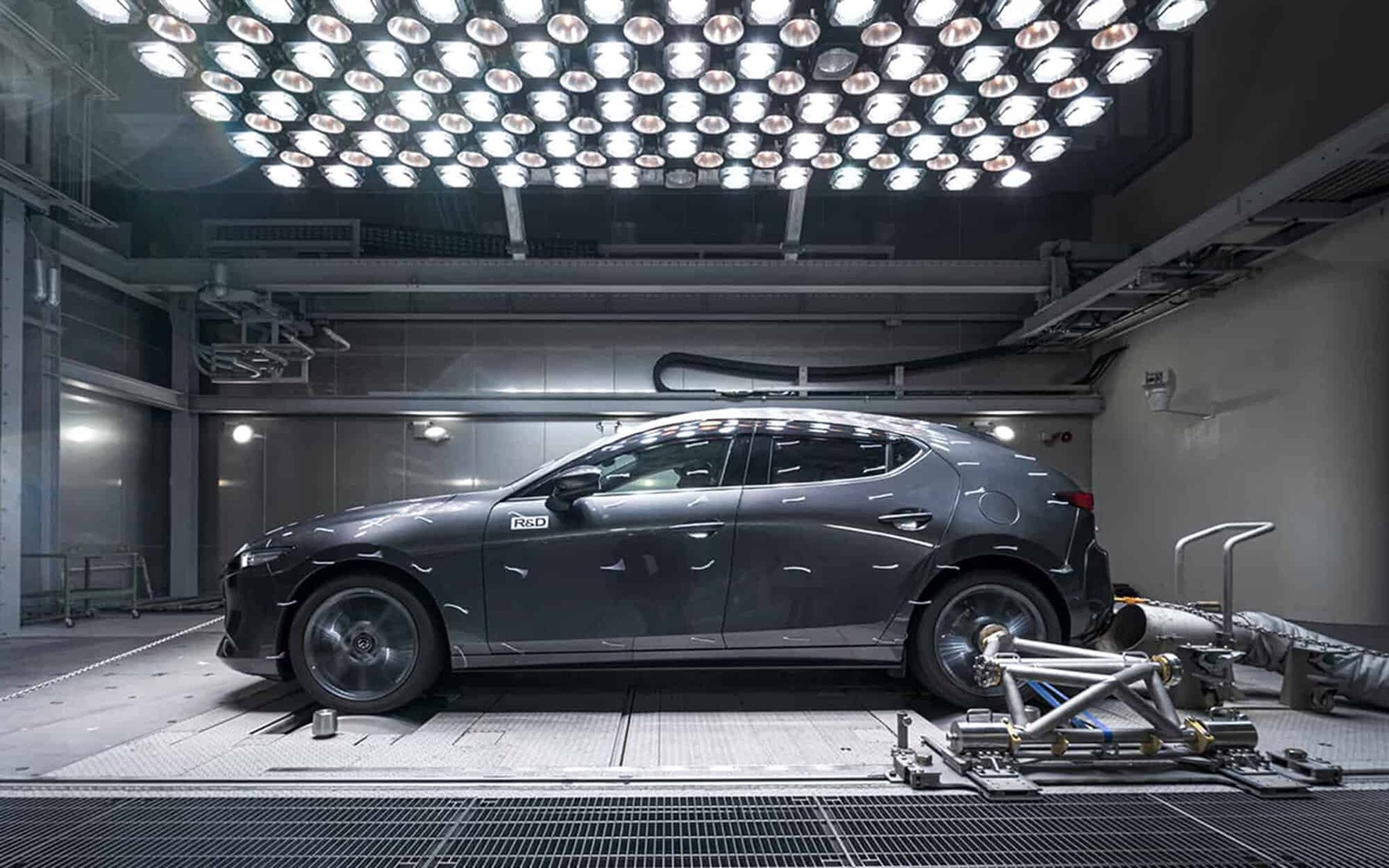INSPIRE
Mazda and calligraphy: The power of the brush
Discover why traditional calligraphy is so highly valued in modern Japan and is the chosen means for expressing key concepts in Mazda’s design philosophy.
Calligraphy is the art of setting words on paper with brush and ink. But why has this ancient system of writing endured, despite the invention of faster and more efficient methods of communication? With the advent of keyboards, smartphones and instant messaging, and software that can handle the intricacies of written Japanese, there’s no need for anyone in Japan to resort to brush and ink to get their thoughts across. Yet shodo—the art of writing with a brush—has maintained its position not only as one of Japan’s most treasured traditional arts but also as a tool for modern living and commerce.
“Calligraphy has endured because there is fundamental beauty that dwells within the characters,” says Koji Sakamoto of the Design Division’s Brand Style Management Department at Mazda’s headquarters in Hiroshima, Japan. “When you write with brush and ink, you express feelings and sensibilities that cannot be conveyed via the printed word.”
Calligraphy originated in China and was introduced to Japan in the early fifth century. It later came to be considered one of the four key accomplishments a cultured person should be skilled in: painting, chess, music, and calligraphy.
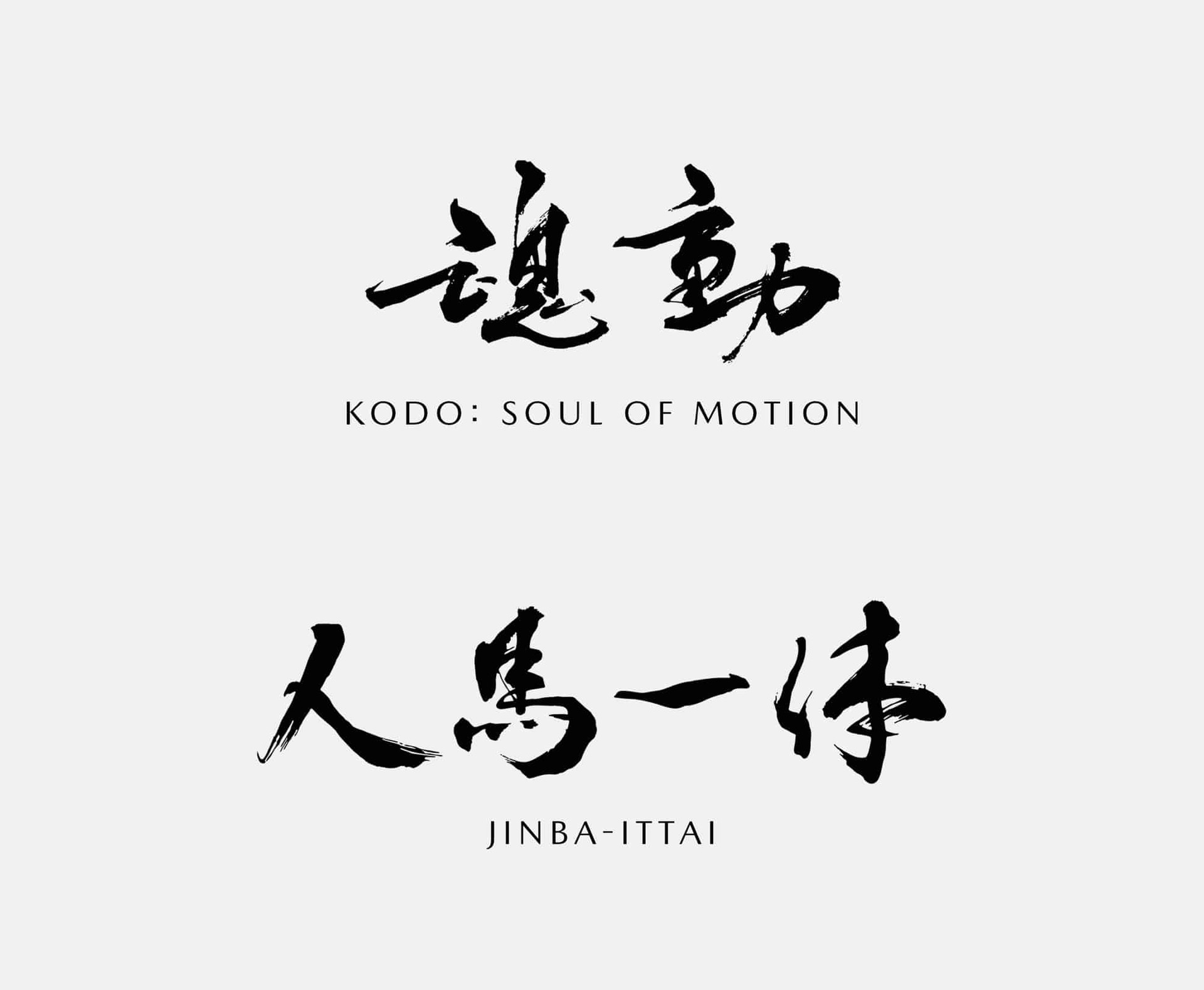
The latest calligraphic versions of key Mazda philosophies were created by one of the company’s own engineers. As Kazuo Nishikawa, Senior Principal Engineer in the Technical Research Center, brushed the characters for jinba-ittai, which expresses the perfect harmony of a rider and a well-matched horse, he brought to the task not only his full concentration and skills as a calligrapher, but also his decades of expertise in engineering Mazda’s superior driving experience. The characters for Kodo, which is a coined word using the Japanese characters for “soul” and “movement”, were a special challenge, as the design team asked Nishikawa to transform Mazda’s Vision Coupe concept car into calligraphy. Nishikawa brushed the phrase more than 300 times before he arrived at the ideal balance of elegance, stability and motion that defines the Vision Coupe.
“Shodo is a world of just two colours: black and white. You create not just with the ink but also with the
KAZUO NISHIKAWA, Senior Principal Engineer, Technical Research Center
space you leave untouched.”
In modern Japan too, those who write beautifully receive respect and open admiration. Learning to handle brush and ink is part of compulsory education, and families send their children for additional after-school lessons. Adults may also enroll in shodo classes or study with a private teacher, sometimes as a hobby or for personal enrichment, but often out of the practical desire to compose their annual New Year’s greeting cards in a fine hand. Department stores employ workers with calligraphy skills to write the personalized messages wrapped around formal gifts. At leading Japanese restaurants, the menu of the day may be written every morning with brush and ink on fine washi paper.
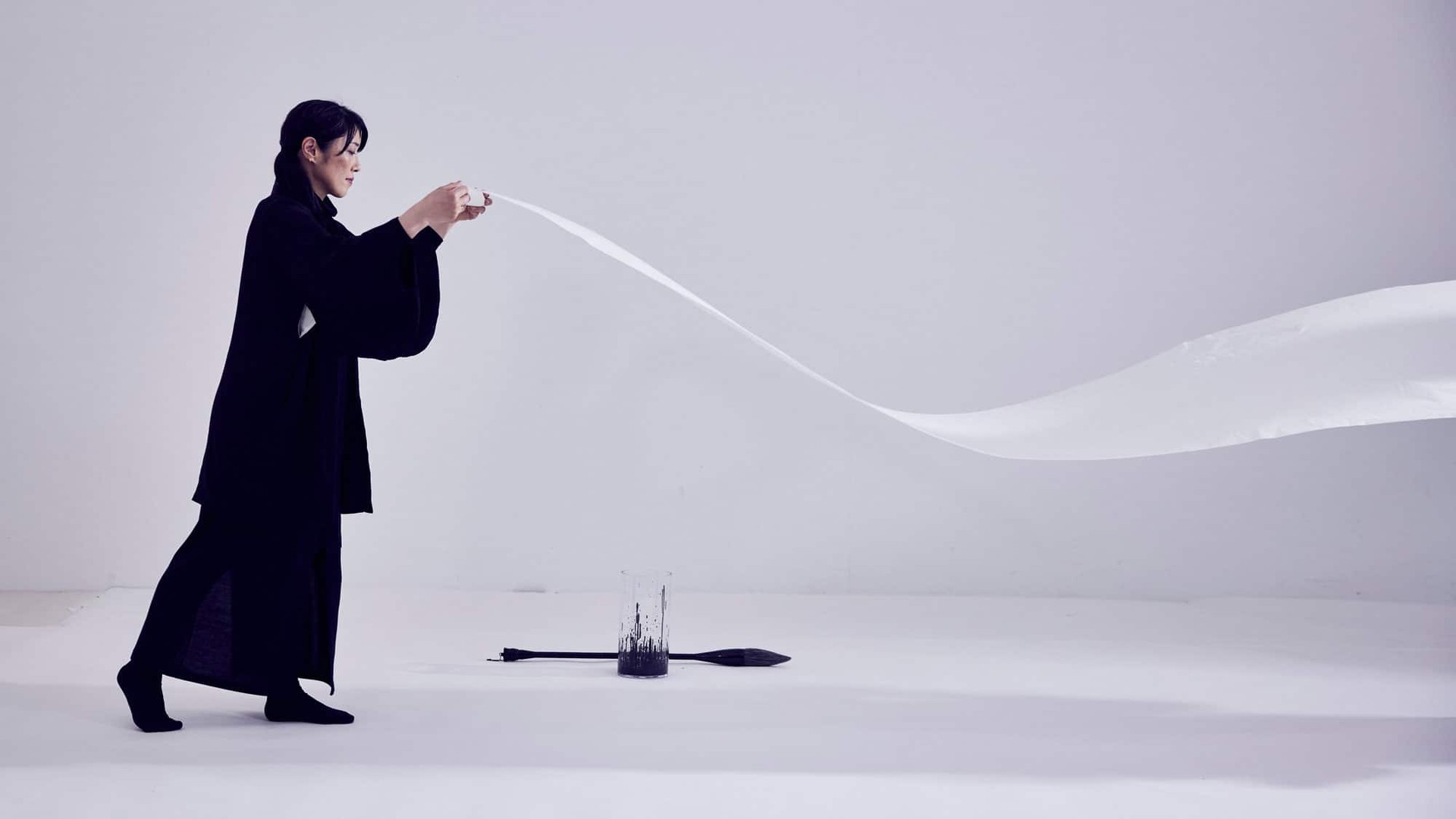
“Even if you can’t read what’s written, the
Rie Takeda, artist
meaning will communicate itself to you.”
Anyone can connect with the beauty of Japanese calligraphy, says Rie Takeda, an artist who learned shodo as a child in Japan before moving to Europe more than 20 years ago. Now based in Germany, she creates art that combines calligraphy with other mediums, including paint and collage, while teaching the way of the brush to students of many different nationalities. In addition to private and group lessons, she offers a highly rated course on Domestika, an online learning platform that attracts millions of subscribers worldwide.
“You don’t need to know Japanese to appreciate calligraphy,” Takeda says. “The power of shodo lies in its adherence to basic principles of Japanese aesthetics, including elegant lines, balanced composition and the skillful use of empty space. These are foundations of Japanese design that speak to everyone.”
They are also the foundations of Mazda’s “Kodo: Soul of Motion” design philosophy. In preparing for Kodo’s launch in 2010, the company commissioned a professional calligrapher to create the imagery for key Japanese-language concepts. “We knew calligraphy would have more impact than something in a regular printed font,” says Sakamoto. “Launching a concept logo is like launching a car; it’s important to make a strong, immediate impression.”
When Mazda’s design team decided in 2018 to update the calligraphy for jinba-ittai, it turned to a surprising source of talent within the company. Members of the team remembered an end-of-year celebration some years earlier, where employees had shown off party tricks in an informal talent show. Nishikawa opened his act by rolling out a large sheet of paper across the banquet hall floor. He then gave a dynamic performance with brush and ink, creating, in just minutes, a stunning work of Japanese calligraphy.
Nishikawa had enjoyed calligraphy since childhood and continued it as a hobby, but he had never done it professionally for Mazda. Nevertheless, the Brand Style team asked Nishikawa to create the new calligraphy. As Sakamoto recalls, “It was a huge advantage for us to be able to work with someone from within the company. Not only is Mr Nishikawa skilled in calligraphy, but he also understands the Mazda design philosophy at the deepest possible level.”
Nishikawa found similarities between the six-month collaboration with the Brand Style team and his regular work as an engineer. “At Mazda, our focus in car design is to create an elegant and refined atmosphere by eliminating all but truly essential elements,” he says. “Calligraphy, too, is guided by a less-is-more aesthetic, which is very much a part of traditional Japanese arts. These commonalities made it easier than I expected to discuss how to balance light and dark, for example, and how to use the space between the brush strokes.”
Mazda’s designers have also taken inspiration from the medium’s brush strokes. In calligraphy, there are movements of the brush called tome (pronounced “toe-meh”), which means to stop and collect energy, and harai (pronounced “hah-rai”), which means to sweep or release. The side profile of the Mazda CX-30, for example, conjures this sense of charge and release, as a sweeping brush stroke conveys a sense of pent-up energy released through forward motion.
Sakamoto expects that Mazda will continue to “breathe life into the car” as an ongoing tradition: “The Japanese aesthetics and the beauty that exist in the delicate balance you see in calligraphy are in line with our core design philosophy.”
Words Alice Gordenker / Images Alun Callender
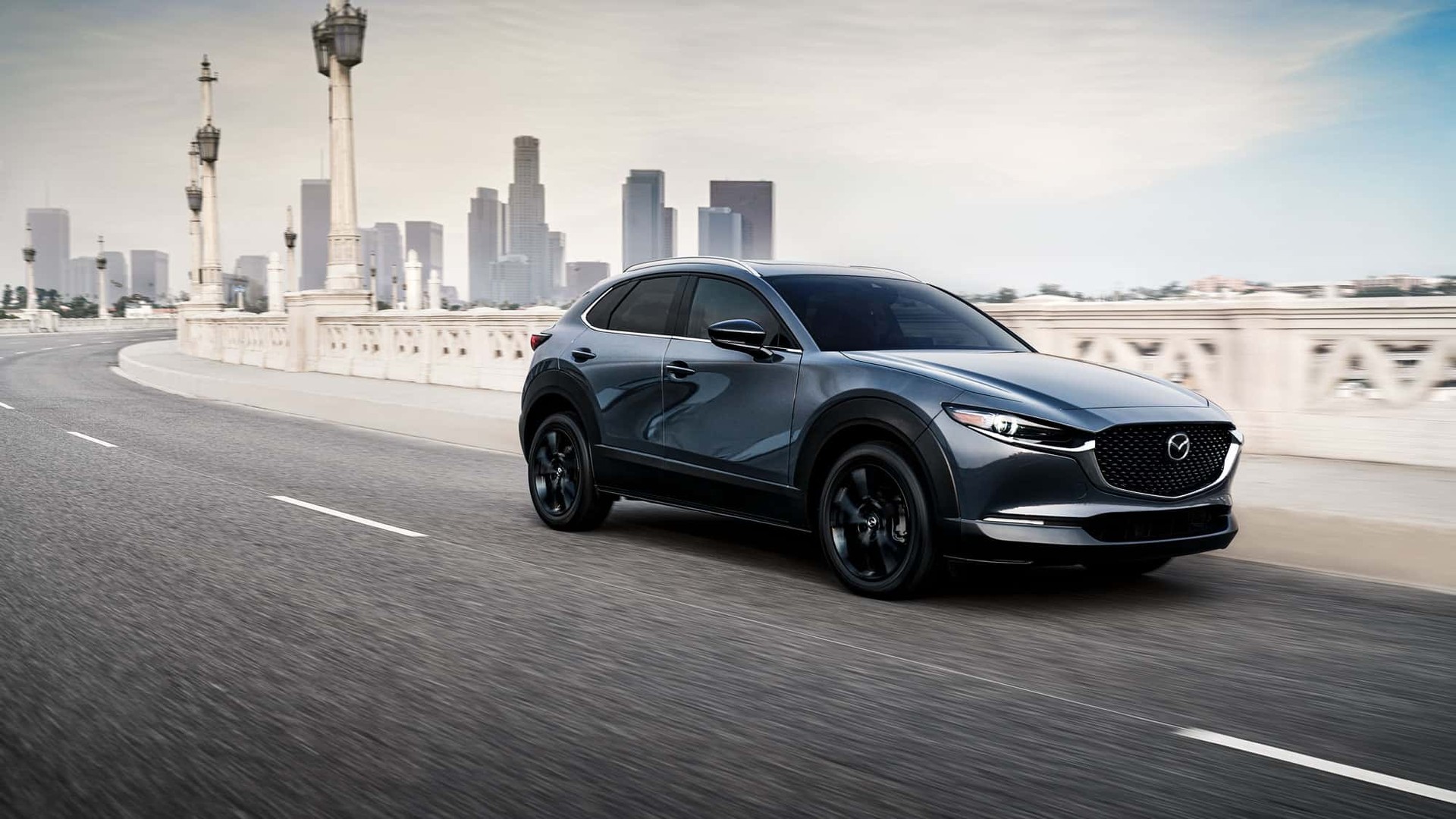
find out more
Artistry in motion
Discover the refined styling and powerful performance of the Mazda CX-30

